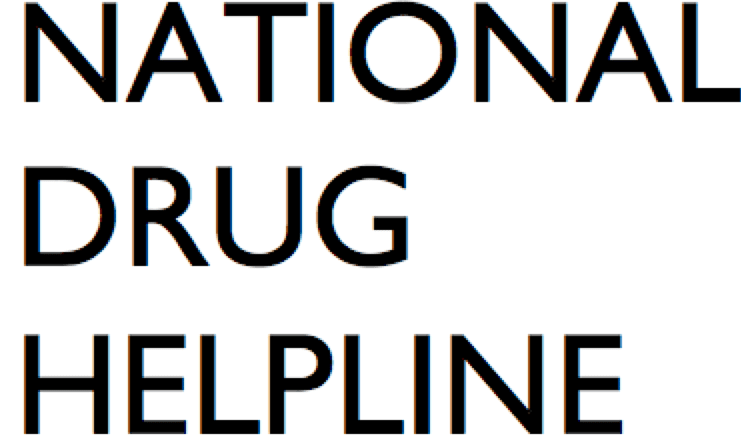If you are a loved one is struggling with drug or alcohol addiction, it can be an overwhelming and isolating experience. But reaching out for help is a crucial first step towards recovery and a drug- or alcohol-free life. Calling a Connecticut drug hotline can be of immense help in such situations. The National Drug Helpline is a toll-free hotline that you can access by dialing 1-844-289-0879, We offer 24/7 support, ensuring that help is always just a phone call away, regardless of the time of day, including holidays and weekends.
Our helpline is staffed by knowledgeable operators who understand addiction and its complexities. They can provide a non-judgmental and compassionate space for you to express your concerns and ask questions. Operators who will answer your call are trained to provide up-to-date information on various treatment options, including counseling, therapy, inpatient and outpatient rehabilitation programs, support groups, and community resources.
By calling the Connecticut drug hotline, you can gain access to a wealth of resources and information specific to your local area, such as treatment facilities, support services, and counseling centers. This assistance can prove invaluable and empower you with the knowledge and support you need to take the first steps towards a healthier, substance-free life. Call today to locate drug and alcohol rehab facilities in Bridgeport, New Haven, Stamford, Hartford, Waterbury, and other Connecticut communities.
CONNECTICUT SUBSTANCE ABUSE RESOURCES
- Connecticut Department of Mental Health and Addiction Services
- Healthy Lives Connecticut
- 2-1-1 United Way of Connecticut
- Alcoholics Anonymous Connecticut
SUBSTANCE ABUSE IN CONNECTICUT
The Substance Abuse and Mental Health Services Administration (SAMHSA) reports the following with regards to substance use in Connecticut: [1]
- Past-month marijuana use was reported by 8.7% of youth aged 12-17 years in 2017-2019 compared to 9.3% in 2002-2004. During a similar timeframe, the US national average decreased from 7.9% in 2002-2004 to 6.8% in 2017-2019.
- Past-month alcohol use was reported by 13.0% of youth aged 12-17 years in 2017-2019 compared to 19.5% in 2002-2004. The US national average changed from 17.6% in 2002-2004 to 9.4% in 2017-2019.
- Past-month illicit drug use was reported by 9.8% of youth aged 12-17 years in 2017-2019 compared to 11.1% in 2015-2017. The US national average stayed stable at 8.2% for this timeframe.
- Past-year initiation of substances (first lifetime use) was reported by youth aged 12-17 years as follows during 2017-2019: Alcohol 10.3% (US average 9.3%), marijuana 7.3% (US average 5.2%), and cigarettes 2.0% (US average 2.3%).
Therefore, while alcohol, marijuana, and illicit drug use is showing promising downward trends in Connecticut, usage of these substances by youth in the age group of 12-17 years remains higher than the US national average. The data for young adults is as follows:
- Past-year marijuana use was reported by 44.8% of young adults aged 18-25 years in Connecticut in 2017-2019 compared to 39.2% in 2002-2004. During a similar timeframe, the US national average increased from 28.7% in 2002-2004 to 35.0% in 2017-2019.
- Past-year marijuana use disorder was reported in 8.4% of young adults aged 18-25 years in 2017-2019, compared to 7.9% in 2002-2004. The US national average changed from 6.0% in 2002-2004 to 5.6% in 2017-2019.
- Past-year opioid use disorder was reported in 1.7% of young adults aged 18-25 years in Connecticut in 2017-2019 compared to 2.6% in 2015-2017. The US national average changed from 1.3% in 2015-2017 to 1.0% in 2017-2019.
- Past-year illicit drug use disorder was reported in 10.6% of Connecticut residents aged 18-25 years in 2017-2019, compared to 12.4% in 2015-2017. The US national average hovered around 7.2-7.5% during this timeframe.
- Past-month binge alcohol use was reported by 48.8% of young adults aged 18-25 years in 2017-2019 compared to 46.5% in 2015-2017. The US national average in 2017-2019 was 35.4% showing Connecticut fared considerably worse than the country as a whole.
- Past-year alcohol use disorder among young adults aged 18-25 was reported in 12.7% of Connecticut residents in 2017-2019, compared to 20.2% in 2002-2004. The US national average for 2017-2019 was 9.8%. Again, Connecticut showed a higher percentage of young adults battling alcohol use disorder compared to the national average.
- Past-year substance use disorder was reported in 20.8% of young adults aged 18-25 in Connecticut in 2017-2019 compared to 19.6% in 2015-2017. The US national average in 2017-2019 was 14.7%, showing Connecticut fared considerably worse.
In addition, the Behavioral Health Barometer also found the following for 2017-2019 in Connecticut residents aged 12 years and older:
- Past-year marijuana use: 18.6% (US average 16.2%)
- Past-year marijuana use disorder: 2.0% (US average 1.6%)
- Past-year heroin use: 0.3% (US average 0.3%)
- Past-year prescription painkiller misuse: 3.5% (US average 3.7%)
- Past-year opioid use disorder: 0.6% (US average 0.7%)
- Past-year illicit drug use disorder: 3.1% (US average 2.9%)
- Past-year alcohol use disorder: 6.3% (US average 5.3%)
- Past-year substance use disorder: 8.4% (US average 7.4%)
- Number of people enrolled in substance use treatment (single day counts for 2019): 43,404
- Number of people enrolled in opioid treatment programs (single day counts for 2019): 18,696
- Problems among people enrolled in treatment: 49.1% drug problem only, 12.3% alcohol problem only, 38.6% both drug and alcohol problems

UNIQUE CHALLENGES REGARDING SUBSTANCE ABUSE IN CONNECTICUT
Connecticut, like many other states in the US, faces certain unique challenges when it comes to substance abuse. Despite its small size, the state has been impacted by the widespread prevalence of drug and alcohol abuse and addiction. One of the most significant challenges for Connecticut is the state’s proximity to major cities such as New York City and Boston. This makes Connecticut susceptible to drug trafficking and the influx of illicit substances from these hubs. This proximity contributes to the availability and accessibility of drugs, putting Connecticut residents at risk of substance abuse and addiction.
Another challenge in Connecticut is the prevalence of prescription drug abuse which has become a public health concern. Misuse of prescription medicines includes taking these medications at higher doses than prescribed, taking the medications for purposes other than prescribed, or taking medications prescribed to someone else. The state has experienced high rates of opioid prescriptions, driving a rise in opioid addiction and related issues, including overdose deaths.
The state also faces challenges in addressing substance abuse among specific populations, such as adolescents, young adults, and veterans. Prevention and intervention programs targeted towards these demographic groups are essential to address their unique circumstances.
The stigma associated with addiction is a major hurdle for Connecticut residents in need of substance abuse treatment. Overcoming this stigma requires increased awareness, education, and community support to encourage individuals struggling with substance abuse to seek treatment without fear of judgment or social repercussions.
Connecticut has taken steps to address these challenges by implementing various initiatives, including expanding access to addiction treatment, establishing harm reduction programs, and promoting community-based prevention efforts. Nonetheless, continued efforts are necessary to combat substance abuse in the state, raise awareness, provide comprehensive treatment options, and support citizens on their path to recovery.
CONNECTICUT INITIATIVES TO COMBAT OPIOID ABUSE
The state government has made efforts to combat the opioid crisis through improved prescribing practices, increased access to opioid addiction treatment, and the distribution of overdose-reversal medications like naloxone. The state has developed NORA (naloxone and opioid response app), a free interactive tool to help people understand the use of this life-saving medicine. [2]
In addition, the state has made fentanyl test strips available through local health departments. These strips can be used to prevent opioid overdoses. If a test strip is positive, it is an indication to the drug user that they should go slow, use less of the drug, make sure they are not alone when using it, or choose not to use it at all. [2]
Connecticut has also developed a statewide awareness campaign called Change the Script to address prescription drug misuse. This educational campaign is designed to increase awareness about the dangers of opioid use and reduce the stigma associated with the use of life-saving drugs like naloxone. Change the Script Rx targets prescribers and encourages them to utilize the Connecticut Prescription Monitoring and Reporting System (CPMRS). [2]
CONNECTICUT OPIOID AND DRUG OVERDOSE STATISTICS
More Connecticut residents die from drug overdoses than motor vehicle accidents. The majority of drug overdose deaths in the state are due to prescription opioid painkillers and illicit opioids like heroin. In 2020, the age-adjusted drug overdose death rate in Connecticut was 39.1 per 100,000 people compared to a national average of 28.3. [3]
In 2022, illicit opioids and stimulants resulted in 1,452 deaths, a 4.7% decrease compared to 2021. In the decade between 2012 and 2022, over 10,000 Connecticut residents lost their lives to drug overdoses. The highest rates of overdose mortality are seen in the Hispanic and non-Hispanic Black ethnic groups. Males have a higher mortality rate than females.
Approximately 9 out of 10 overdose deaths in Connecticut involve an opioid drug (prescription painkiller, fentanyl, or heroin). 86% of all overdose deaths are caused by fentanyl. [4]
- SAMHSA. Behavioral Health Barometer Connecticut. Available online. Accessed on July 6, 2023.
- Connecticut State Department of Public Health. Opioids and Drug Overdose Prevention. Available online. Accessed on July 6, 2023.
- Connecticut State Department of Public Health. Opioid and Drug Overdose Statistics. Available online. Accessed on July 6, 2023.
- Connecticut State Department of Public Health. Unintentional Drug Overdose Deaths in Connecticut 2022. Available online. Accessed on July 6, 2023.
Last updated: July 25, 2023
